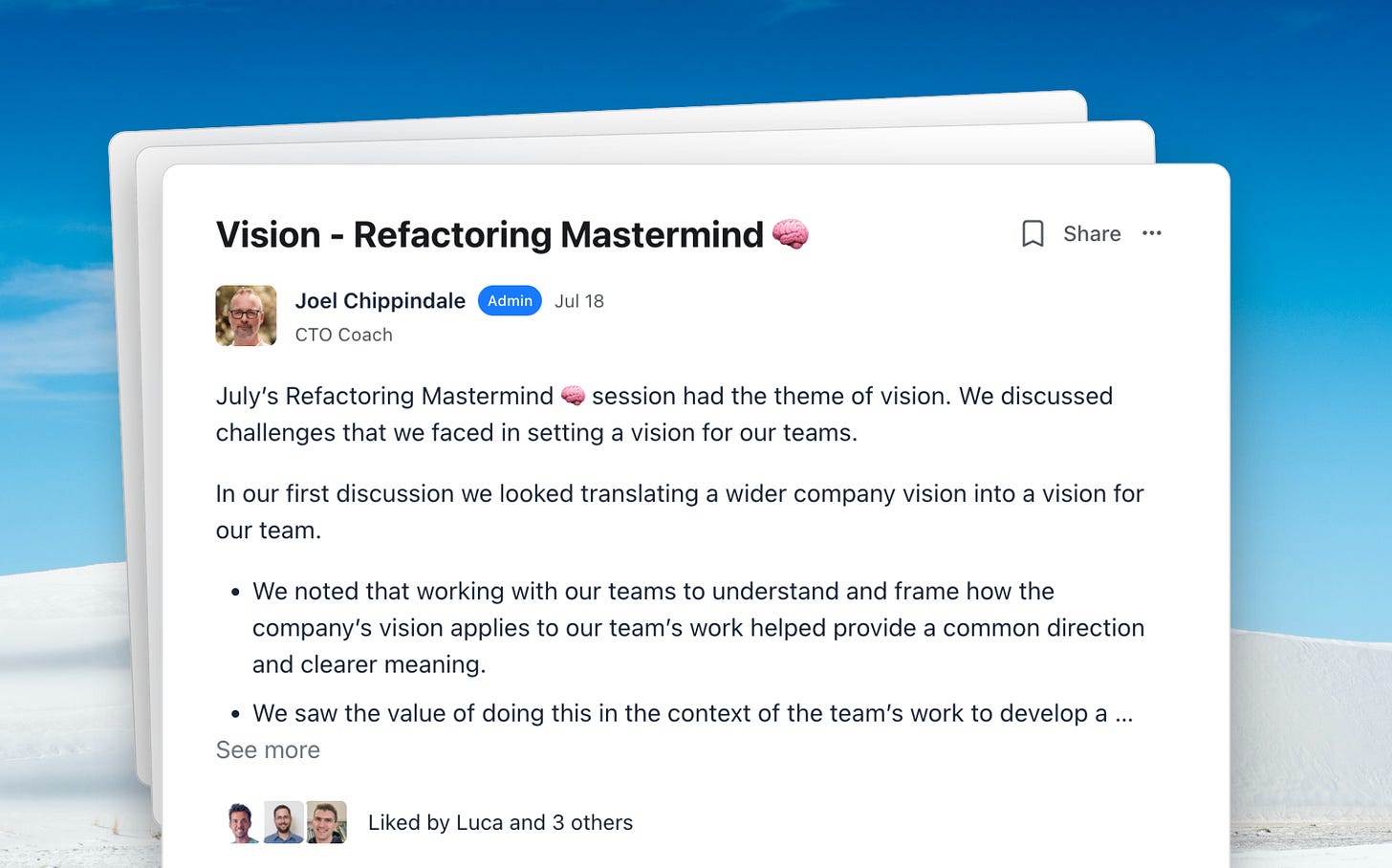How to Craft your Vision and Mission 🔭
Why they matter, and how to translate company ones into practical, effective ones for your team.
Two weeks ago I published an article about motivation that sparked some debate among readers.
In that post, I argued that motivation is enabled by autonomy, which, in turn, is enabled by good communication.
But communication of what, exactly?
In my experience, it’s not just goals and tasks — a crucial role is also played by the big picture: vision & mission statements.
We discussed this topic in the latest Mastermind session on the community 👇 so today we will explore the insights that came up in the session, together with my own personal experience & research.
To be honest, when I was a founder, I didn’t take vision & mission very seriously — in my defense, most of the other founders I knew didn’t, too. Still, I absolutely admired those from more famous, established startups.
Apparently, this doesn’t make any sense. The truth, though, is simple: it’s easy to recognize a great vision and mission when you see them, but it’s damn hard to come up with your own.
In fact, many teams find themselves caught between two extremes:
🥱 Platitudes — vague, obvious statements that don't inspire action or provide real guidance.
🏃♂️ Tactics — overly detailed plans that stifle creativity and need too frequent revision.
How do you find the right balance? How do you create vision and mission statements that actually help your company? And your team? And yourself?
In this article, we explore why these things matter, and how to create them effectively. As always, we’ll look at three things: 1) first principles, 2) practical strategies, and 3) real-world examples.
Here’s what we will cover:
🎯 Vision vs Mission — what are their differences, why you need both, and for what.
🪜 Strategy, Projects, and Goals — let’s disambiguate other related concepts.
🚆 Case Study: Wanderio — how to turn company statements into team ones, using the real-world example of my own startup.
🛠️ How to craft your team’s vision & mission — how to create impactful and useful statements, collaboratively with your team.
Let’s dive in!
🎯 Vision vs Mission
As a founder, I was always confused about the difference between vision and mission.
To understand their relationship, I believe it’s helpful to view them as part of a bigger hierarchy:
🔭 Vision — the ultimate, long-term aspiration
🏆 Mission — the current purpose and approach to contribute to the vision
🗺️ Strategy — how you plan to achieve the mission
🎯 Goals — specific, measurable milestones
A vision statement is like the North Star—a fixed point in the distance that guides your journey. It is far in the future, aspirational (and inspirational), and relatively stable over time.
It paints a picture of the world you want to contribute to. It’s not what your product does, but the impact you want it to have.
If the vision is the destination, the mission is the journey you are currently on. It is more tangible, focused on what you do and who you serve, and crucially, subject to change.
One of the best examples of vision vs mission relationship is 🚗 Tesla:
Vision — "To accelerate the world's transition to sustainable energy"
Mission — "To create the most compelling car company of the 21st century by driving the world's transition to electric vehicles"
The mission provides the what, and the vision supplies the why, which is broader and leaves room for evolving the mission in the future.
1) Mission comes first 🥇
Counterintuitively, in most situations I believe it is easier to come up with the mission first. Missions are still broad, multi-year initiatives, and chances are you already have one in mind for your company.
Then, to craft your vision, you may ask yourself a few questions:




